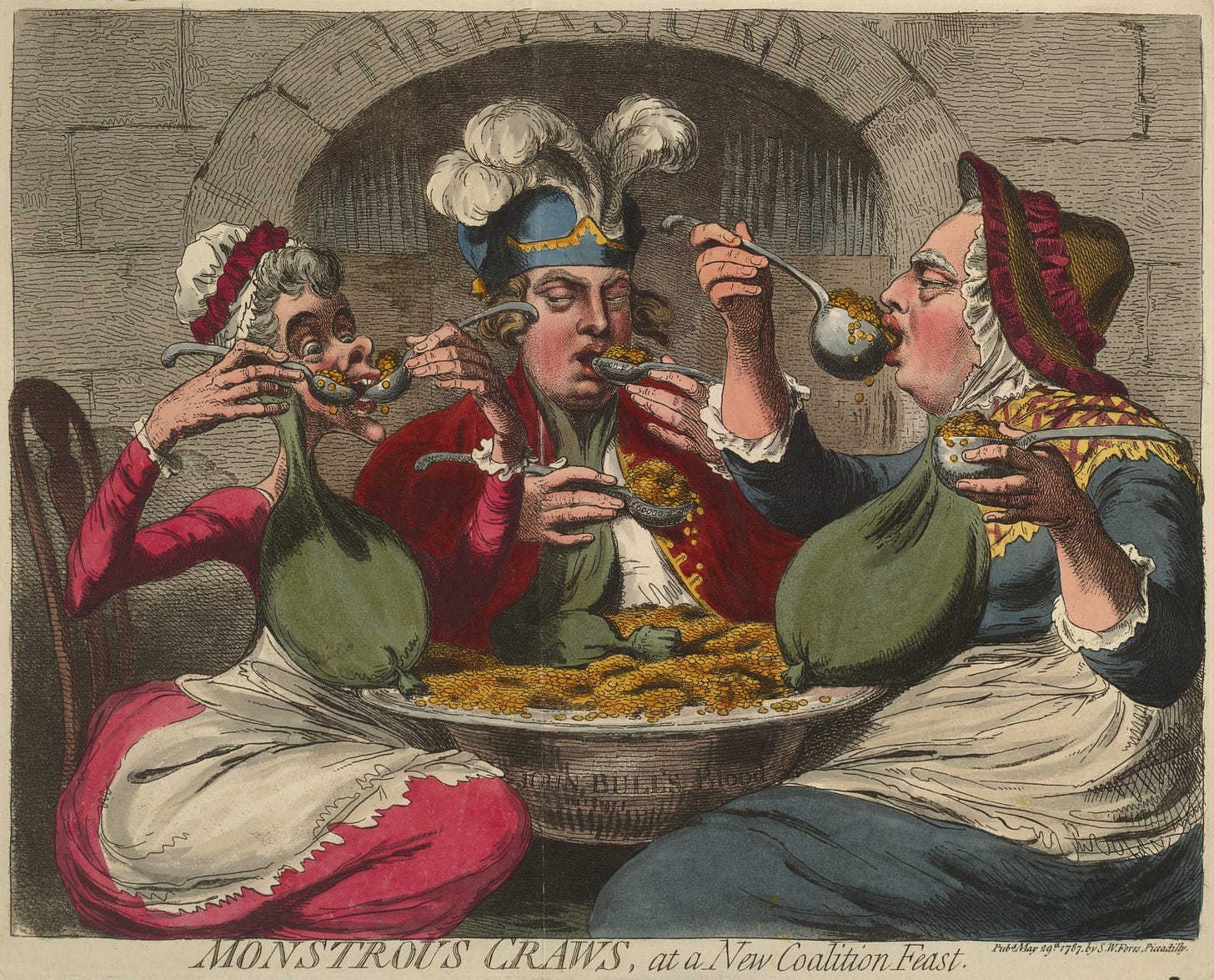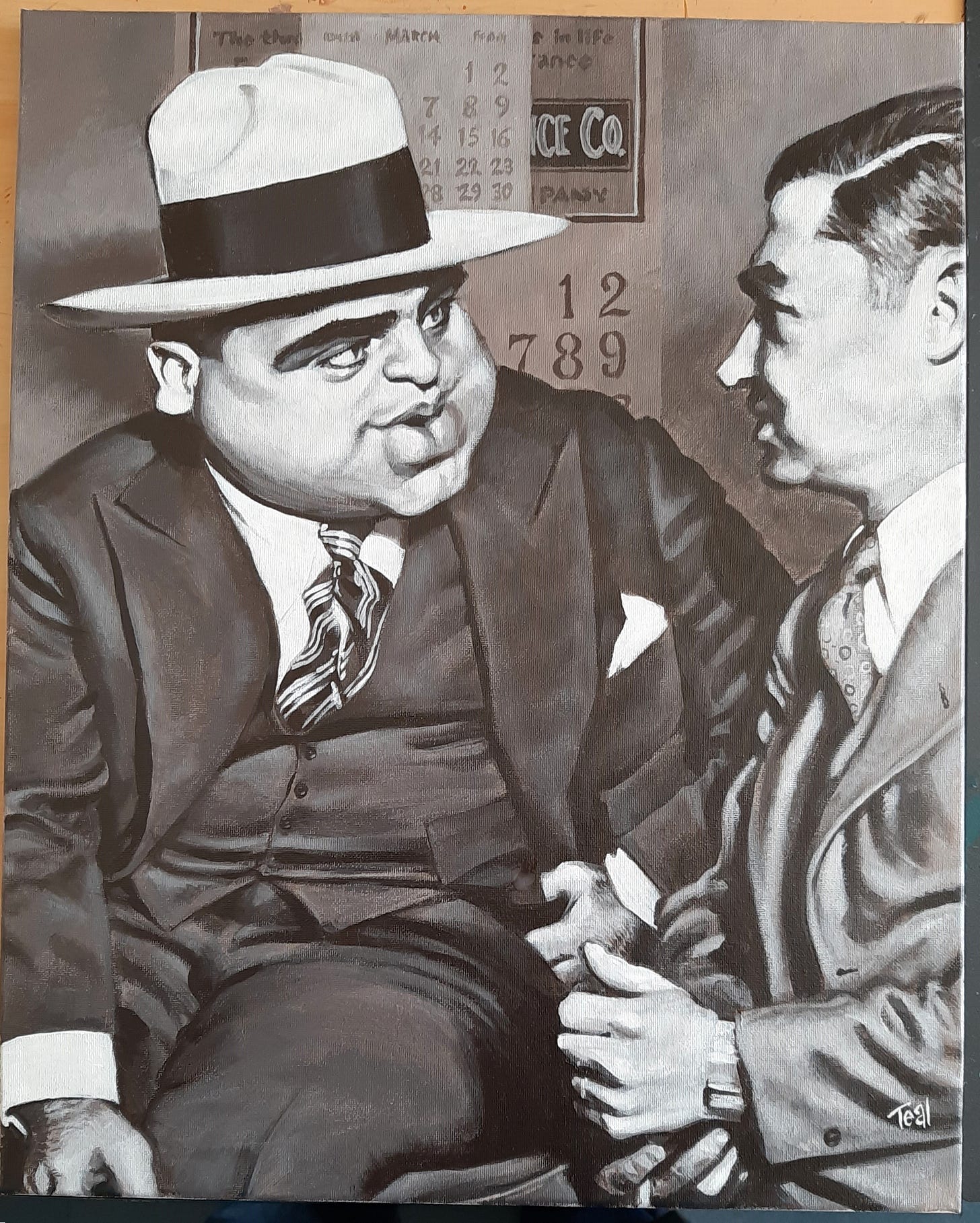All artists, to a greater or lesser degree, are influenced by the art of the past. And some of us are inspired by the past itself. At a time when A.I. is churning out sterile art like a catatonic battery chicken, it’s more important than ever that real-world creators tell the stories behind what they produce. And when it comes to colourful stories, the palette of history has the very best to offer.
As a caricaturist, I’m hugely influenced by the big-name engraver-satirists of the 18th century, like James Gillray and Thomas Rowlandson. But it isn’t just the quality of their work that appeals to me. I’m also fascinated by the era and world they portray. Think of how idealised and stiff much of the regular portraiture of this period can be. But Georgian caricatures feel much more honest, and their subjects are fully alive, characterful individuals. They are an extraordinary window into a lost age.
Caricature has the power to capture the essence of a personality. Recently, I illustrated and co-wrote a children’s history book in which there were a great deal of famous historical names. The faces attached to those names were sometimes very familiar (e.g. Benjamin Franklin), but when they weren’t well known, a caricature was a great way to give a historical moniker some character for a young readership.
More recently, I’ve turned my attention to producing a series of caricature paintings based on the wealth of images from Prohibition-era America. I’m as British as warm beer, so I have no idea why this bullet-riddled period of U.S. history appeals to me so much. But I feel compelled to break out the brushes and see where things go.
The people and settings that you can see in the prolific visual record of 1920s America are so evocative. It was the golden age of U.S. newspapers, and especially press photographers, so I don’t worry about inspiration running dry any time soon. The frozen faces stare out of the photos, across the intervening 100 years, and right into your soul. Whichever side of the law the subjects occupy, there’s a real intensity about them. It’s in the way members of an exasperated police task force pose with pump-action shotguns, or in the glee with which enforcement officers pour barrels of illicit booze into the gutters. It’s in the way a gaggle of mobsters and molls stand brazenly with glasses of hooch raised high, or in the swagger of bootleggers as they are led handcuffed into a courthouse. I love the cuts of their suits and overcoats, and the tilts of their fedoras and bowties. Even a defiantly grim face in a mugshot can have a kind of romance about it.
I have just completed the first painting in the series, and for its subject I went right to the top…or the bottom, depending on your perspective: Alphonse Gabriel ‘Scarface’ Capone. I can’t think of another career criminal who enjoys such notoriety and legendary status as Capone. He’s also pretty much synonymous with Prohibition, so he’s a great route to getting into the period’s groove.
I believe the photograph on which I based this painting was taken during a break in Capone’s trial for income tax evasion, and at a moment when things were not going his way. Even so, there’s a hint of amusement on his face, as if he can’t possibly allow for the fact that he might be nearing his downfall. That arrogance is what I hope I have captured. That, and his sheer physical presence. Imagine being the lawyer he’s fixing with his stare. And look at those meaty paws at the end of his arms. His head is turned in such a way that you can’t see the scars on his left cheek that gave rise to the nickname he hated. He acquired them courtesy of the brother of a woman he had insulted while he was a bouncer on the door of a Brooklyn nightclub.
I’ve already moved on to the next painting in the series. It’s based on a photo of a bunch of anonymous, dodgy-looking boozers enjoying a beer in a speakeasy. The source material appeals to me because every face in it has so much character. Everyone looks so uneasy. That figure in the centre looks like he’s planning to shiv you in the gents. The big guy on the left looks like a mob accountant, thirsty after a long day cooking the books. And the bloke in the background with the eyebrows looks horrified that his picture is being taken at all. Is he the speakeasy’s proprietor, risking his neck keeping ne’er-do-wells plied with hooch?
I’m trying to make this feel like the kind of image that would be pinned up behind the bar, turning slowly from subtle sepia to yellowish-brown over a few decades, so I’m using quite a lot of burnt umber and Naples yellow with the black and white.
All of this is very much an artist’s response to history. I’m a million miles from being any kind of expert on Prohibition, or any other province of the past, for that matter. But for those who are, I hope caricature can sometimes be a way of seeing things with fresh eyes.
Do you have a favourite caricaturist? If so, who and why?









